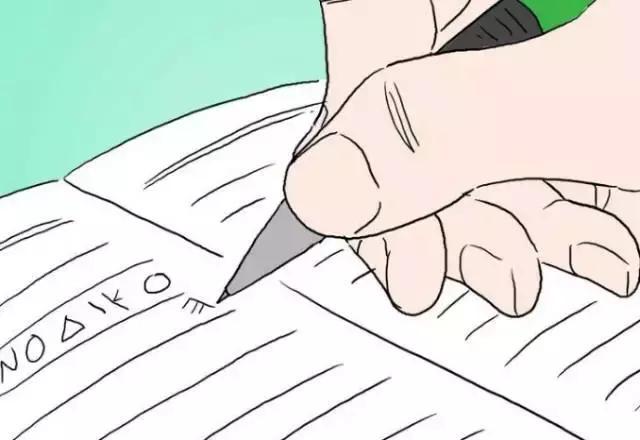在教学工作者实际的教学活动中,往往需要进行教案编写工作,借助教案可以更好地组织教学活动。如何把教案做到重点突出呢?下面小编带来七年级英语教学设计详细教案(精选10篇),希望大家喜欢。七年级英语教学设下面是小编为大家整理的2023七年级英语教学设计详细教案【10篇】【完整版】,供大家参考。

在教学工作者实际的教学活动中,往往需要进行教案编写工作,借助教案可以更好地组织教学活动。如何把教案做到重点突出呢?下面小编带来七年级英语教学设计详细教案(精选10篇),希望大家喜欢。
七年级英语教学设计详细教案 篇1
【学习目标】:
1、熟练掌握本课13个单词.
2、谈论对方喜欢或不喜欢的食物。
【学习重点】:
名词的复数形式。
【学习过程】:
一、自主学习(教师寄语:knowledge is power.)
学习任务一: 会读写本课13个单词.
1.个人自读,记忆本课单词.
2.小组互相检查单词读写情况.
3.根据汉语写出下列英语单词并展示
喜欢___________香蕉_____________汉堡包___________西红柿_________
花椰菜_________薯条_____________橙子_____________冰____________
奶油__________ 冰淇淋_________ 沙拉___________ 草莓_________梨__________
学习任务二: 谈论对方喜欢或不喜欢的食物。
1. 录音完成1b ( 面的对话编号)
2. 两人一组练习1b 对话.
3. pair work 和你同伴模仿1b对话.编新对话.
二、合作共建(教师寄语:many hands make light work. )
小组讨论你所学的不可数名词.
_______________________________________________________
三、系统总结(教师寄语:no man can do two things at once.)
i. 一般情况下加 -s . 如: book books
hamburger _____________pear__________ banana_______________ orange_________ ii. 以 o 结尾的加 -s 或-es 如: photo photos
tomato _______________
iii. 以 s . sh ch . x 结尾的`加-es 如: watch watches
bus _________
iv . 以辅音字母加 y 结尾的变 y 为 i 加 es . 如: dictionary dictionaries
strawberry __________ family _______________
四、 诊断评价:
(一) 翻译下列句子.
1.我喜欢花椰菜。
____________________________________________________________
2.我不喜欢橘子。
__________________________________________________________
3.他喜欢西红柿.
__________________________________________________________
4.她不喜欢梨.
____________________________________________________________
5.你喜欢冰淇淋吗?不,我不喜欢
__________________________________________________________
6.你喜欢草莓吗?是的,我喜欢。
________________________________________________________
(二) 根据句意及汉意写出下列单词
(1) do you l ________ salad ?
(2) i want to eat some b _________.
七年级英语教学设计详细教案篇2
一、教学目标:
1. 语言知识目标:
1) 能掌握以下单词: rain, windy, cloudy, sunny, snow, weather, cook, bad, park,
message, take a message, could, back, problem
能掌握以下句型:
① —How"s the weather in Beijing?
—It"s sunny.
② —Can I take a message for him?
—Yes. Could you just tell him to call me back?
—Sure, no problem.
2) 能用所学的知识描述天气情况。
3)描述正在发生的动作。
2. 情感态度价值观目标:
教育学生善于观察天气,善于调整自己的情绪;了解世界各地的天气情况,增加世界观念。知道大自然的力量是神奇而伟大的,我们应当好好学习,立志学好科学知识,为长大后探索神奇的大自然,打好基础。
二、教学重难点
1. 教学重点:
1) The vocabulary and useful expressions.
2) —How’s the weather?
—It"s raining/ windy.
3) —What are you doing?
—I"m playing basketball.
2. 教学难点:
运用目标语言来对天气进行问答,并且会问答其他人正在进行的活动。
三、教学过程
Ⅰ. Warming-up and Lead in
1. Greet the Ss and check the homework.
2. Watch a video program about the weather.
Ⅱ. Presentation
1. (Show some pictures of the weather)
Let Ss look at the pictures and ask them how the weather is.
Ss learn the new words and expressions with the help of the pictures.
2. Look at the pictures in 1a. Then read the new words on the right. Ask the Ss to match the words with pictures.
3. Check the answers.
Ⅲ. Game (How"s the weather?)
1. (Showing some pictures on the big screen.) Ask Ss "How"s the weather?"
2. Ss guess and answer the question.
Ⅳ. Listening
1. Now let"s look at the city names in the box in 1b. Please read after me.
Ss read the cities after the teacher.
2. Now, We’ll hear four conversations. Listen carefully, point out each city in the picture as it comes upon the tape. Play the recording a second time. Ask Ss to write the name of the city in the picture of its weather.
3. Check the answers.
Ⅴ. Pair work
1. Tell the Ss: If you are in one of the places in the picture above. Talk about the weather
with your friends in another city on the phone.
2. Make a model with a student like this:
T: Hi! How"s the weather in Beijing?
S1: It"s sunny.
3. Ss work in pairs. Ask and answer about the weather in the cities.
Ⅵ. Listening
七年级英语教学设计详细教案篇3
【学习目标】
1、熟练掌握动词be的过去式的用法,并完成相应练习。
2、熟练运用本模块所学的单词、短语和固定搭配。
【教学重点】
be动词的一般过去时(am/ is ? was; are ? were)。
预习指导与检测
1、翻译下列词组或短语:
(1)在*_________
(2)南非__________
(3)在七月十八日_________
(4)从……到……__ _________
(5)……地区__________
2、复习be动词一般过去时的形式: No, I ________. Yes, I ________. 课堂学习过程
1、检查预习部分的答案。
2、就课本Activity1的表格进行问答练习。
3、再根据表格内容调查自己小组内的一位组员。
4、完成课本Activity3的练习。
5、完成课本Activity4的练习。
6、根据Activity1的调查结果写一段话,用be动词的
过去时描述同学过去的生活。
He/ She was born……
当堂检测
Task1. 单项选择:
( ) 1. She was born _______ Tianjin.
A. at B. in C. on
( ) 2. ——______ were you born? ——On 2nd November, 1990.
A. What B. Where C. When
( ) 3. It takes us ten minutes by bike _______ my house
______ school.
A. to, to B. to, from C. from, to
( ) 4. I was born _______ a winter morning.
A. in B. at C. on
( ) 5. Who _______ your first friends?
A. was B. were C. are
( ) 6. I remember Mr. Wang was my ______ English teacher.
A. one B. first C. the first
( ) 7. This is a story book _____some colourful pictures in it.
A. have B. has C. with
Task2. 根据首字母或汉语意思提示写单词:
1. We can take a shower (沐浴) in a b_________.
2. There is a p_______ with some fish in it.
3. Nelson Mandela wasn’t he hero of South A_______.
4. John Adams was the p_________ of the USA.
1. Betty was b______ in Quincy, USA.
2. My maths teacher was very s_______ with me.
3. What was your p_______ life like?
4. Tony is f_________ to everyone, we like him very much.
6. We have a big g_________ (花园)with lots of flowers in it.
8. He was born in a small __________ (村子) in Shandong Province.
9. My house is small, but it’s very ______________ (舒适的).
10. There were two _________ __________ (影剧院) in the small town. Task3. 连词成句:
1. were , born , you , where
______________________________________________?
2. first , school , what , primary , your , what’s
______________________________________________?
3. born , small , was , village , a , I , in
______________________________________________.
4. wasn’t , in , born , Tony , China
______________________________________________.
5. President , Africa , of , he , South , was , the
______________________________________________.
七年级英语教学设计详细教案篇4
一、Teaching aims教学目标
1. 能用所学知识阅读文章。
2. 能理解文章内容,回答问题。
3. 能够理解文章细节内容。
4. 能够运用所学内容介绍自己的上学路线。
二、 Language points语言点
词汇:
1) 名词n. river, village, bridge, boat, ropeway, year, villager, dream
2) 形容词 adj. afraid, true, many
3) 动词 v. cross, leave
4)短语 between … and …, come true
2. 句型:It’s not easy to cross the river on a ropeway.
There is no bridge.
You want to know how …
三、情感态度价值观目标:
了解东西方国家出行方式的不同,以及不同的交通规则,教育学生注意交通安全, 加深对交通知识的了解。倡导自觉遵守交通法规及礼貌,构建和谐的人际关系。了解交通的发展,培养创新精神。
四、教学过程:
(一)Lead-in
T:Boys and girls,could you tell me how do you get to school every day?
Ss:Yes.
S1:I ride my bike to school .
S2: I get to school by bus.
T:There are so many types of transportation!
Do you think it is easy to get to school?
Ss:Yes.
T:But it’s very difficult for some students to get to school.Do you want to know something about that?
Ss;Yes.
T:Let’s come to 2a.
2a Look at the picture and title below.Guess what the passage is about.
(结合图片并展示答案:It’s about how students go to school.)
七年级英语教学设计详细教案篇5
Present some key words ,phrases and sentences of the passage to help students understand the main idea of the passage better:river, boat, go on a rope way.
T: How do people usually cross a river?
How does the boy Liangliang go cross the river to school?
It is his dream to have a bridge, Can his dream come true?
Now let’s read the passage of 2b.
(三)Reading
Fast reading: How does Liangliang go to school every day?
Careful reading: Read the passage and answer the questions.
How do the students in the village go to school?
Why do they go to school like this?
Does the boy like his school? Why?
What is the villagers dream? Do you think their dream can come true? Why or why not?(多媒体呈现答案)
(四)Language points
1. Crossing the River to School
cross是动词,“穿越,越过”,主要指“横穿”。
还可以作名词,意为“十字形,叉形符号”。
across既可以作介词,也可以作副词。
crossing 是名词,“渡口,交叉点”。
2. For many students,it is easy to get to school.
It is +adj.+to do sth. “做某事是.......”
3. There is a very big river between their school and the village.
between ...and... “在....和...之间”,连接两个并列的成分。
between/among
(1) between 用于两者之间。
(2) among 用于三个或三个以上的人或物的“中间”。
4. But he is not afraid.
afraid: “害怕的,畏惧的”。
(1)be afraid of sth. 害怕某事/某物
(2)be afraid to do sth. 害怕做某事
(3)be afraid of doing sth. 唯恐做某事,指担心或担忧做某事会引起某种后果。
(4)be afraid + that从句,恐怕....
(5)为某件已经发生或可能发生的事表示歉意或者作出否定判断,相当于sorry.
5. Many of the students and villagers never leave the village.
leave主要用法归纳如下:
a. 离开; 脱离
The train will leave at six tomorrow morning.
b. 把……留在; 留下
Leave the child at home. 把小孩留在家里。
c. 遗忘; 丢下
I left my notebook in the dormitory. 我把笔记本落在宿舍里了。
d. 使……处于(某种状态),后面常接宾语补足语
Leave the door open.
6. leave for+地点,“动身去某地”
He left for the station a few minutes ago.
7. must /have to
must多表示主观需要或责任感的驱使有必要或有义务去做某事,多译为“必须”,
have to多表示客观存在的环境所限,即客观要求(无奈)而为之,多译为“不得不干某事”。
I must clean the room because there are too dirty.
I have to do my homework now.
8. It takes sb some money/time to do sth.花费某人多少时间/钱做某事
Sb pay some money for sth 某人为某物花费多少钱
Sb spend some time/money on sth 某人在做某事或某物上花费时间/钱
Sb spend some time/ money (in) doing sth
Sth cost sb some money 某物花费某人多少钱
七年级英语教学设计详细教案篇6
【课题】Unit1 My name’s Gina.
【学习目标】
知识与能力:1. 掌握并规范字母Ii-Rr.
2. 识记本单元词汇:what, this, in, English, a, an, map, orange, jacket, key, quilt, pen, ruler, spell, please, etc.
过程与方法:学会从对话中获取对方的相关信息。
情感态度与价值观:使学生学会如何礼貌的与他人交往。
【学习重难点】:熟练掌握本单元词汇及语言结构。
一、自主预习
【预习任务】:
任务一:写出下列汉语的英语形式。
名字___遇见___问题,难题___ 回答,答案 ___
第一的____ 最后的____
任务二:写出下列单词的汉语意思。
1.my____x2.clock ____x3.nice ____ 4.what ____
5. your____x 6.hello ___x7.I____ 8.you ____9.his _x_x_
10.her _____x11.name_____12.are____13.is______
【预习诊断】:
1. 选择题:
(1.)Kate has lost(丢失) ___xkey. ____xasked ____xfor help.
A.her ,he, I B. his, he ,me C. his, she, I D. her, she, me
(2)__x plus(加) seven is thirteen?
A. Five B. Six C. Eight D. Nine
(3)___ is her name ?
A. who B. what C where D. How
2. 写出下列英语形式。
(1):电话号码??????_______x(2):早晨好________(3):下午好______
3. 写出下列词的英语意思:
1). 早晨_____2).下午____x3).晚上_____x4).谢谢____x
5).名字____6).好的____ or____x
【预习反思】:你还有什么问题吗?(Do you have any problems?)
二、课中实施
Step1 交流展示
Step2 精讲点拨: What’s your name ? 你叫什么名字?句中的your可根据问对象换成his、her等物主代词。What’s his name ? (翻译) _________x.
Step3 Pairwork 1: Student A: What’s your name ?
Student B: My name is Mary.
Pairwork 2: Student A: Hello! I’m Mary.
Student B: Hi, Mary! I’m Jim.
Step4 Summary : 1)向别人作自我介绍是通常用My name is + 自己的名字/ I’m +自己的名字
2)将下列单词分类 I , he, my, his, her, she, it, its
人称代词: _____________x
物主代词: ______________
三、作业:
满分:10分 得分率:___
(一)、单项选择;
1. What’s ___ name? A. he B. I C. her D. you
2. ____she Lucy? A. Am B. Is C. are D. be
3. ____is Li Lei.____English is good
A. He’s ; His B. His; He C. He; His D.You; Your
4.下列有一个发音与其他发音不同的是___.
A. Cc B.Bb C. Ff D. Gg
5. ------What’ your name ? ----------_____
A. Yes B. Thanks C. Tom D. Fine, thank you
(二)、补全对话。
1. A:How do you do? B:________x
2. A: ________x?
B:Fine, thank you.
3. A: Good evening, Frank!
B:________, Eric!
4. A: ________, Dale!
B: Good afternoon, Alice!
5. A: ______________x?
B: His name is Tom.
七年级英语教学设计详细教案篇7
教学目标:
(1)There are lots of bicycles in China.
(2)There is a famous river.
教材分析:
这一模块分为两个单元,第一单元主要教学生怎样谈论一个地方,例如一个景点,一个城市等等。学会用数字表达长度和人口数量等。
教学重点:
(1)There are lots of bicycles in China.
(2)There is a famous river.
教学难点:
用“There is/ There are”介绍事物
学情分析:
学生对本模块较熟悉,经过本节课,让学生通过卡片、图片的提示来进行口笔头操练
教学准备:
课件、录音机、磁带
教学过程:
一、游戏热身
随音乐传递物品,音乐停该同学用there be句型说句子
二、导入
让学生先观察图片,猜猜都是*的什么地
三、课文教学
1、播放录音,让学生给所听到的录音图片排序。
2、接着让学生跟读
3、试着让学生用自己的语言描述图片上的内容。
4、现在可以变换练习方式。请学生两人一组、向对方介绍六张明信片中自己最喜欢的一张。如果有必要,可以再放一遍录音,请学生逐句跟读,并试着抓住每张明信片最主要的特征、然后再向同伴讲述。鼓励学生根据图片进行更多描述,或是把自己对该事物的了解添加到描述中去。
5、重音的学习:请学生听SB unit 2活动3的录音,之后让学生试着跟读一遍。要求他们注意重读的地方。请学生把书翻到SB unit 2活动3,仔细看书上的句子以及每句话中用黑体标出的`地方,比较一下自己刚才跟读时重读的位置与书上的标注是否一致。老师再放录音,学生边听边看书,认真体会。
四、应用
现在学生衣服上的图案很丰富。教师可让一个学生站在黑板前,让其他学生用“There胡屯镇联合校集备活页。
五、学习歌曲
完成SB unit 2活动4,请学生欣赏并学习一首歌曲。放录音前,请学生们先试着通过文字和图片猜测歌曲的内容。
播放录音,请学生积极模仿录音中的语音语调。如果他们感到学习歌词有困难,老师可以先把领读带中歌曲前慢速朗读的歌词放一遍给学生听。
六、课后作业
挑选一张风景的明信片,用英文进行简单的描写和介绍
七年级英语教学设计详细教案篇8
教学内容:
本课以故事型教学为基础,在踢足球这种课余活动的话题中学习对他人能力的提问。能听懂并询问单复数物品。
教学目标:
1、在踢足球这个课余活动的话题中,掌握单词soccer ball, soccer shoes的准确读音,及框架句型Can you…?Yes, I can、 No, I can’t的用法。
2、通过图片提示和动作辅助,学生能听懂并理解故事内容;通过师生互动,小组合作,能用正确使用的主体句式向他人询问能否做某事;通过听音模仿和情景表演等形式,能够准确表达课文中主体句式的情感。
3、能过学习踢足球这一语境,提高*的意识。
教学重点:
1、词汇:soccer ball,soccer shoes,play soccer.
2、句型:Can you play soccer? Yes, I can.
教学难点:
1、单词soccer:soc-cer
2、单复数句型的区分与应用
教学准备:
课件、图片、人物头像
教学过程:
一、热身导入
1、歌曲热身:I can skate and I can jump.师生共同唱歌。
2、利用歌曲,询问学生能做的事情,过渡复习旧知。利用闪烁、遮挡和局部呈现的方式,让学生猜球。
二、新知呈现
初听课文:由“猜球”游戏,过渡到本课课文,带着问题“What do they want to do?”初听课文,同时,教师配相应的动作,帮助学生理解课文大意。
三、新知学练
1、根据初听课文的任务,再利用动作,让学生明确play soccer的含义,并利用不同的图片进行短语读音的操练。
2、精听学说:带着问题“Does Robo know them?”精听课文。
(1)学说soccer ball:利用角色转变,练习读音,以及单数问句和回答。
(2)学说soccer shoes:利用词卡,开火车练习读音,以及复数问句和回答。
(3)通过Yes!和Sure!的回答对比,让学生充分理解Sure!的强烈语气和情感,同时进行角色转变练习。
3、学练新单词:soccer
(1)唤醒旧知:dog-hot-box-soc
(2)拼读规律:soc……,学生猜测后三个字母。利用课件,从前一个音节中的c,再分出一个字母c后,再增加字母组合er。
4、 chant小结
四、新知巩固
1、听音跟读,强化语音要点。
2、分角色朗读课文。
3、分小组表演课文,并展示。
五、新知应用
1、巩固游戏:学生在标有数字1-6的足球中,选择一个数字完成任务,任务以巩固新知为主。
2、延续最后一个任务:根据短片内容创编对话,并进行角色扮演。
六、总结作业
1、 总结:在众多运动图片中,学生自由选择,并表达能做的运动。
2、作业:
听:听一听第六课P44录音,每天5-10分钟。
读:读一读第六课P44课文,要注意课文中人物的情感。
写:写一写,写1-3个问题,下节课向同学和老师提问:Can you…?
七年级英语教学设计详细教案篇9
一、Teachers words: Where there is a will, there is a way.
二、Teaching aims:
1、知识目标:
词汇: clean, read, sure, wait, toy, west, camera, activity, shop, bird.
短语:talk about, a photo of, thanks for, play soccer, wait for, some of, in the first photo, …
交际用语:
(1)What are you doing? --Im watching TV.
(2)Is Nancy doing homework? --No,she isnt、 Shes writing a letter.
(3 ) Do you want to go to the movies? --Yes,I do.
(4)When do you want to go? --Lets go at 7:00.
语法:
1、现在进行时的用法。
2、英语能力目标:学会谈论人们正在做什么,学会写英文信,能就现场发生的事作现场报道。
3 、情感目标:通过合作学习谈论正在发生的事,启发学生思维,培养学生的合作精神。
三、教学重点:"教学目标"中的"知识目标"和"能力目标"。
教学难点:"现在进行时"的应用。
四、Teaching course:
Step 1、预习导学自测:
根据句意补全已给出首字母的单词:
1、My little brother is w_____ a letter.
2、The students are c_____ the classroom.
3、The boy is taking a photo with a c______.
4、Are they w_____ for a bus over there?
5、Hes r_____ a newspaper.
小小翻译家:
1、talk about________
2、a photo of________
3、wait for________
4、in the first photo________
5、电话交谈________
6、踢足球________
7、因…而感谢________
8、许多图书馆_______
Step2情境导入
Look at the pictures in P25 1a and write sentences.
Now its 6:00 pm、 What are they doing?
In picture A、 She is talking on the phone.
In picture B、 ________________________
In picture C、 ________________________
In picture D、 ________________________
In picture E、 ________________________
In picture F、 ________________________
Step3自主探究
1、以上练习的句子是什么时态?_______________________________。
2、该时态的结构是_________________________________________。
3、现在分词的构成规则
A、一般直接在动词后加______,如reading,watch_____, talk____ 。
B、以字母不发音的e结尾的____________,如writing,come_______, make ____ 。
C、一个元音字母加一个辅音字母结尾且末尾只有一个辅音字母的重读闭音节词要_____________________ 。如swimming , run ____ ,begin ____。
Step4合作交流
1、Make dialogues in pairs
---What are you doing?
---I am reading、
MORE DIALOGUES:
七年级英语教学设计详细教案篇10
【课题】
Unit1 My name’s Gina.
【学习目标】
知识与能力:
1、掌握并规范字母Ii-Rr.
2、识记本单元词汇:what, this, in, English, a, an, map, orange, jacket, key, quilt, pen, ruler, spell, please, etc.
过程与方法:学会从对话中获取对方的相关信息。
情感态度与价值观:使学生学会如何礼貌的与他人交往。
【学习重难点】:
熟练掌握本单元词汇及语言结构。
一、自主预习
【预习任务】:
任务一:写出下列汉语的英语形式。
名字_遇见_问题,难题_ 回答,答案 _
第一的x 最后的_
任务二:写出下列单词的汉语意思。
1、my
2、clock
3、nice
4、what
5、 your
6、hello
7、I
8、you
9、his
10、her
11、name
12、are
13、is
【2023七年级英语教学设计详细教案【10篇】【完整版】】相关文章:





